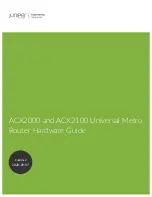
85 - 238
CCNA 2: Routers and Routing Basics v3.1 Instructor Guide – Module 7
Copyright
©
2004, Cisco Systems, Inc.
219.17.100.0 in 1 hops
199.6.13.0 in 1 hops
210.93.105.0 in 3 hops
Other commands that can be used to troubleshoot RIP update issues include the following:
•
show ip rip database
•
show ip protocols
•
show ip route
•
debug ip rip
•
show ip interface brief
7.2.7 Preventing routing updates through an interface
The
passive interface
command prevents routing updates from being sent out a
particular interface. In the graphic, Router Z interface Fa0/0 is not allowed to send router
updates to Router A. This may be implemented for a variety of reasons. One reason might be
that the administrator of Router Z does not want information about the internal network to be
sent out to other routers. If Router Z is a stub network, the administrator of Router A may
prevent routing updates from being sent to Router Z since there is one way in and one way
out. Students must understand that routes will still be learned through this interface. They also
need to know that the network that this interface is connected to is advertised if a network
statement is configured for that network.
7.2.8 Load Balancing with RIP
Load balancing is the process of routing packets over multiple equal-cost paths to increase
throughput. RIP can load balance over as many as six equal-cost paths, although four is the
default. Packets are sent “round robin” over the equal-cost paths, this means that the equal-
cost paths are used in turn. Since the metric for RIP is hop count, equal-cost paths indicate
that a network can be reached through multiple paths that have the same hop count.
















































